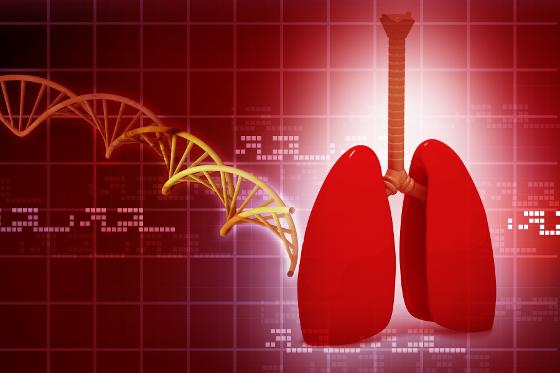Omics biomarkers in cancer epidemiology
This project encompasses several innovative subprojects aimed at advancing our understanding of cancer-related biomarkers. These initiatives employ cutting-edge technologies and comprehensive data analysis to explore various facets of cancer epidemiology and early detection.

The main aim was the potential for an improved understanding of causality in epidemiology by opening up for quantification of traditional criteria of biological plausibility in a more complete biological model. The project was based on the collection of ~50 000 whole blood samples buffered to preserve the mRNA gene expression profiles. The sample collection had been funded by three grants from the National Research Council of Norway, and took place in 2003-6.
Publications:
- Associations of Breast Cancer Related Exposures and Gene Expression Profiles in Normal Breast Tissue—The Norwegian Women and Cancer Normal Breast Tissue Study. Link to publication.
- André Berli Delgado. Cohort profile: The Clinical and Multi-omic (CAMO) cohort, part of the Norwegian Women and Cancer (NOWAC) study. Link to publication.
- Nikita Baiju. Associations of gene expression in blood with BMI and weight changes among women in the Norwegian Women and Cancer postgenome cohort. Link to publication.
- Karina Standahl Olsen. Global Blood Gene Expression Profiles Following a Breast Cancer Diagnosis—Clinical Follow-up in the NOWAC Post-Genome Cohort. Link to publication.
- The Blood Transcriptome Prior to Ovarian Cancer Diagnosis. Link to publication.
- Nikita Baiju. Gene Expression in Blood Reflects Smoking Exposure among Cancer-Free Women in the Norwegian Women and Cancer (NOWAC) Postgenome Cohort. Link to publication.
- Karina Standahl Olsen. Physical Activity and Blood Gene Expression Profiles. Link to publication.
- Einar Holsbø. Predicting Breast Cancer Metastasis from Whole-Blood Transcriptomic Measurements. Link to publication.
- Einar Holsbø. Metastatic Breast Cancer and Pre-Diagnostic Blood Gene Expression Profiles—The Norwegian Women and Cancer (NOWAC) Post-Genome Cohort. Link to publication.
- Differential Expression of the miR-17-92 Cluster and miR-17 Family in Breast Cancer According to Tumor Type; Results from the Norwegian Women and Cancer (NOWAC) Study. Link to publication.
- Torkjel Sandanger. DNA Methylation and Associated Gene Expression in Blood Prior to Lung Cancer Diagnosis in the Norwegian Women and Cancer Cohort. Link to publication.
- Eiliv Lund. Rethinking the Carcinogenesis of Breast Cancer. Link to publication.
- Runa Borgund Barnung. Coffee Consumption and Whole-Blood Gene Expression in the Norwegian Women and Cancer Post-Genome Cohort. Link to publication.
- Karina Standahl Olsen. Population-Based Precision Cancer Screening—Letter. Link to publication.
- Local in Time Statistics for Detecting Weak Gene Expression Signals in Blood - Illustrated for Prediction of Metastases in Breast Cancer in the NOWAC Post-Genome Cohort. Link to publication.
- Interactions between the Tumor and the Blood Systemic Response of Breast Cancer Patients. Link to publication.
- Eiliv Lund. A New Statistical Method for Curve Group Analysis of Longitudinal Gene Expression Data Illustrated for Breast Cancer in the NOWAC Postgenome Cohort as a Proof of Principle. Link to publication. Link to publication.
- Karina Standahl Olsen. Whole-Blood Gene Expression Profiles in Large-Scale Epidemiological Studies. Link to publication.
- Kvik: three-tier data exploration tools for flexible analysis of genomic data in epidemiological studies. Link to publication.
- Peripheral Blood Cells Inform on the Presence of Breast Cancer. Link to publication.
- Karina Standahl Olsen. Plasma 25 hydroxyvitamin D level and blood gene expression profiles: a cross-sectional study of the Norwegian Women and Cancer Post-genome Cohort. Link to publication.
- Karina Standahl Olsen. Plasma Fatty Acid Ratios Affect Blood Gene Expression Profiles - A Cross-Sectional Study of the Norwegian Women and Cancer Post-Genome Cohort. Link to publication.
- Marit Waaseth. Sex Hormones and Gene Expression Signatures in Peripheral Blood from Postmenopausal Women - the NOWAC Postgenome Study. Link to publication.
- Deciphering Normal Blood Gene Expression Variation—The NOWAC Postgenome Study. Link to publication.
The aim of the BLOBREC Proof of Concept Grant was to develop a blood-based gene expression test for the detection/diagnosis of breast cancer. The test was based on results from gene expression analyses in a hospital based nested case-control study in the NOWAC Post-genome cohort.
The idea was at the time considered by the International Search Authorities to be novel and inventive and thus, considered to be patentable.

The main objective of this project was to identify clinically relevant biomarkers of metastatic lung cancer (LC) through integrative omics analysis of DNA methylation and gene and miRNA expression in blood prior to clinical diagnosis.
Lung cancer is the leading cause of cancer deaths worldwide with smoking as the main risk factor. The high mortality results in part from our inability to predict and explain differences in risks among current and former smokers, and from the lack of tools to diagnose the disease, particularly metastasis, at an early stage. Among the more promising biomarkers investigated in blood were omic profiles; DNA methylation, gene expression and microRNAs at diagnosis.
As the study consortium consisted of six European institutions with expertise in systems epidemiology, bioinformatics/biostatistics, genomics and cancer biology, we utilized the latest developments in statistical methods for multi-omics analyses, as well as including time to diagnosis in the assessment of the prospective data. The project examined molecular signals in hundreds of blood samples taken up to 12 years prior to LC diagnosis from four different prospective cohorts in Norway, Sweden and Italy and also from one Norwegian cohort at LC diagnosis. We have had a special focus on samples within 5 years before diagnosis in the pre-diagnostic cohorts and assessed omic profiles according to lung cancer subtypes, stages and risk factors by combining the multi-omics data with detailed questionnaire and clinical information. Besides integrative omics analyses, we also performed analyses at the three single omics levels. Learn more about ID-Lung.
The project period was 2017-2022 and the project was funded by the Research Council of Norway and the Norwegian Cancer Society.

Publications:
- DNA methylation and associated gene expression in blood prior to lung cancer diagnosis in the Norwegian Women and Cancer cohort. Link to publication.
- Dynamics of smoking-induced genome-wide methylation changes with time since smoking cessation. Hum mol gene. Link to publication.
- Transcriptomic signals in blood prior to lung cancer focusing on time to diagnosis and metastasis. Link to publication.
- Prospective Identification of Elevated Circulating CDCP1 in Patients Years before Onset of Lung Cancer. Link to publication.
- Global test for high-dimensional mediation: Testing groups of potential mediators. Link to publication.
- Increased levels of microRNA-320 in blood serum and plasma is associated with imminent and advanced lung cancer. Link to publication.
- Automated calibration for stability selection in enalized regression and graphical models. Link to publications.
- Increased expression of individual genes in whole blood is associated with late-stage lung cancer at and close to diagnosis. Link to publication.

The aim of this project is to find potential blood-based biomarkers of lung cancer and to enhance our understanding of the immunological landscape in blood and its potential link to immunostatus in tumours. The project is studying the relationship between so-called 'omics markers' (DNA methylation, gene and miRNA expression) and immune cells in peripheral blood and tumour (tumour immunostatus, TNM-I), and its significance for diagnosis and prognosis of cancer disease compared to traditional tumour-node-metastasis (TNM) classification used for patient stratification.
Publications:- Systemic inflammation markers and cancer incidence in the UK Biobank. Eur J Epidemiol. Link to publication.

The REMEDIA project is the result of the collaboration of eight countries across the European Union with the overall aim to determine the impact of the exposome on the course of Chronic Obstructive Pulmonary Disease (COPD) and Cystic Fibrosis (CF), thus providing key elements to design more tailored prevention and care programs. Specifically, the study includes collecting exposome (external and internal) information and health data from several cohorts and population registers to determine, at various times of life, whether specific exposome(s) is(are) associated with particular phenotypes of COPD/CF in terms of severity, morbidity, exacerbations and co-morbidities.
Specific objectives:
- To analyze multiple datasets relevant to REMEDIA's research objectives from the participating cohorts.
- To enrich the resulting database with publicly available, environmental and contextual information, matched with subjects, geocoded residence, and newly conducted OMICs analyses in targeted case-controls studies.
- To conduct descriptive analyses and unsupervised clustering approaches to characterize COPD/CF phenotypes.
- To explore exposome-phenotype associations through an exposome-wide association study approach.